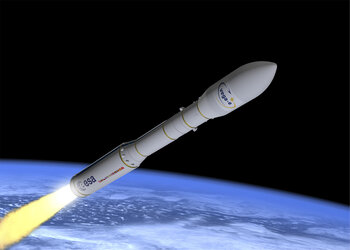Vega-E
Preparatory activities are under way for the evolution of Vega beyond 2025 into a family of configurations. These will be based on existing components and new ones under development to improve the system’s competitiveness for the normal Vega-C payload class and in the small–satellite market.

The main element of the Vega-E evolution is a new European cryogenic upper stage powered by a 10-tonne-class liquid oxygen and methane expander cycle engine. This would replace the current Zefiro-9 and AVUM stages used in Vega-C.
New technologies such as additive manufacturing will be evaluated and tested as possible ways to reduce the recurring cost of the engine and other subsystems.

To reduce the environmental impact, improve the safety of the ground processes and reduce costs, a new roll and attitude control system using hydrogen peroxide will be developed, with potential earlier applications on Vega-C and Space Rider.
In addition, efforts are being aimed at widening the Vega market. These include creating opportunities for small spacecraft mission services and for reaching geostationary orbit and beyond with the use of the flexible Venus (Vega New Upper Stage) electric propulsion module, while keeping the cost competitive on the world market.


Access the video









